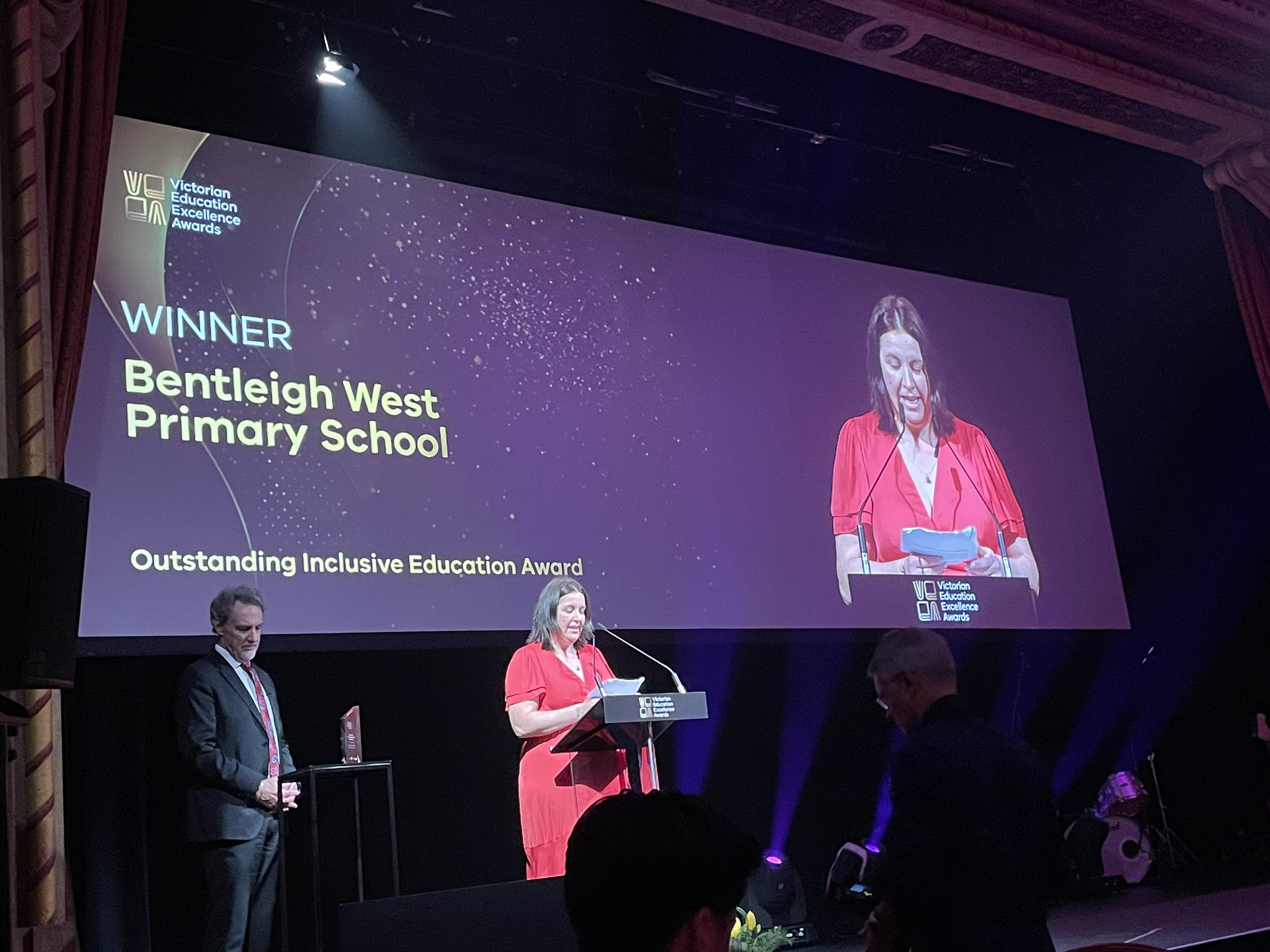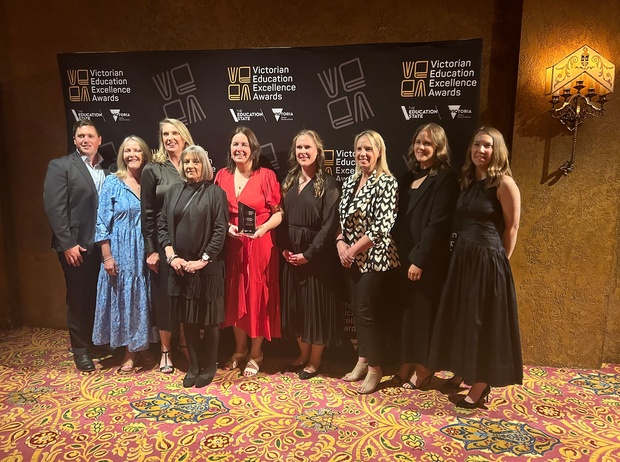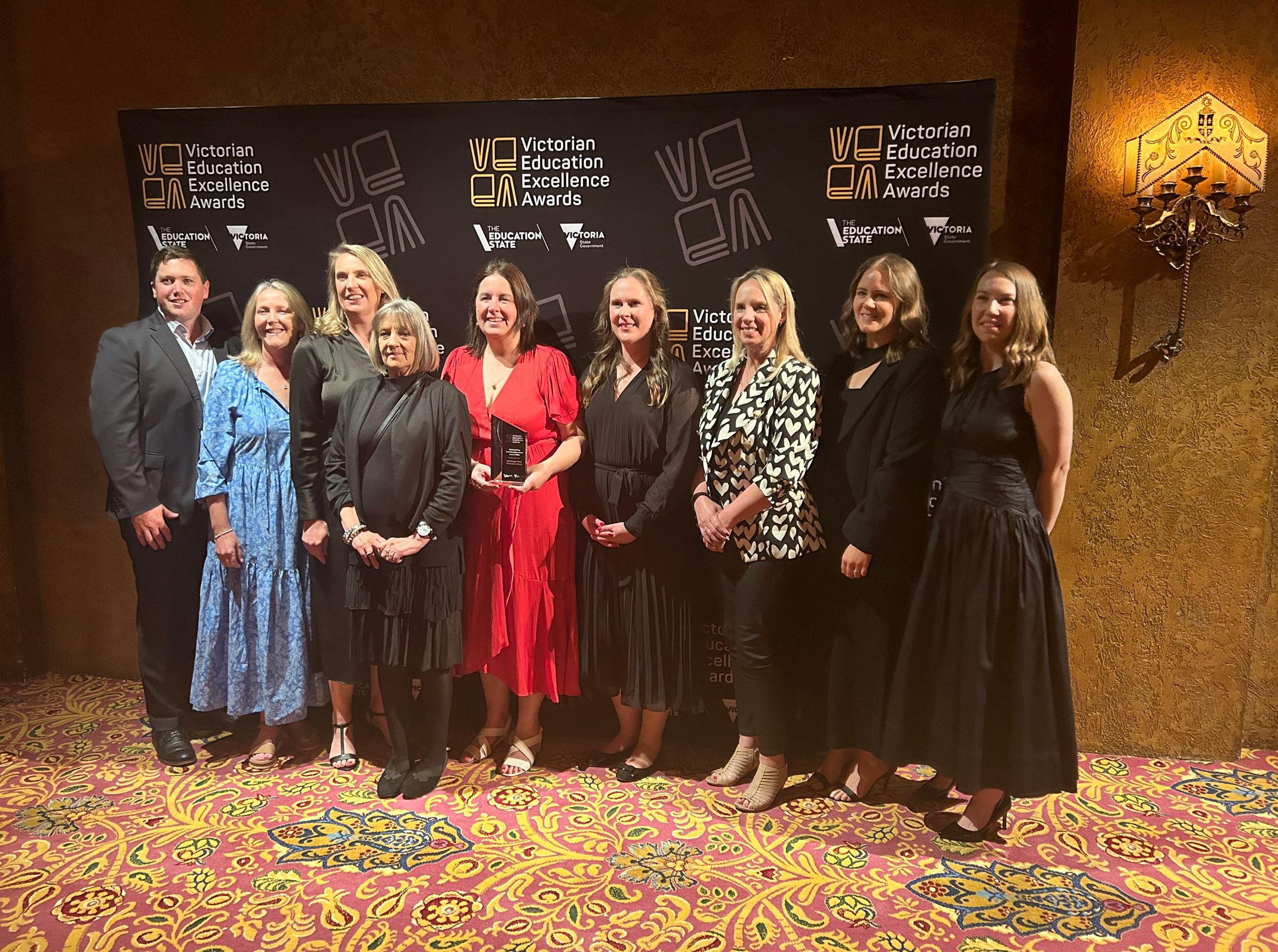At Bentleigh West Primary School in Melbourne, a steely focus on aligning all teachers’ practice with evidence-backed approaches has meant less students are in need of additional support and all are given equal access to learning.
Principal Sarah Asome says the school “talks about inclusive education in tiers”.
“We talk about tier one, tier two and tier three. So, the students at tier three need a lot more intensive intervention and supports, and tier one is your mainstream instruction.
“If you haven’t got the mainstream instruction right, you end up with a lot more students in tier two and three, who really shouldn’t be there.”
This weekend Bentleigh West took out the Outstanding Inclusive Education Team award at the Victorian Education Excellence Awards.
Asome, who is also a dyslexia specialist, says the honour is a nod to the “team around the learner” approach that has been rolled out across the school.
Bringing in the expertise of allied health professionals and learning specialists, every teacher at Bentleigh West is also trained to slip into an intervention specialists’ shoes at any moment.
“We upskill all of our teachers, so any one of them could step in and be an intervention teacher, as opposed to a classroom teacher,” the school leader says.
“They have all got those skills to be able to do that in the classroom on a day-to-day basis.
“Now we’re thinking about how you assess the students differently, should they need an assessment in the classroom that works a little bit differently … we also pull on things like the I CAN program to come in and support us – we’ve got a wide range of people who will come in and support those students and the team around them.”
To be specific, scaffolding the school’s inclusive culture is the Response To Intervention (RTI) Model and a Multi-Tiered System of Support (MTSS) that have enabled “systemic transformation” across all year levels.
When Asome first came to the school some 10 years ago, she says the mainstream instruction in place at the time couldn’t be classed as evidence-based.
“What was happening was we were getting more and more students that needed intervention and support, as opposed to it being (done via) the whole class instruction.”
Literacy instruction in particular needed some work, Asome recalls.
“It was more of a balanced literacy approach.
“It was lacking aspects of structured literacy, so phonics, morphology, explicit teaching.”

Principal Sarah Asome says the honour is a nod to the “team around the learner” approach that has been rolled out across the school.
Teachers’ numeracy instruction was also failing to build students’ fundamental skills, meaning many could not go on to access higher level content.
Aware of the mammoth task ahead, Asome says instructional changes were done systematically and strategically to ensure long-term success.
“We started small. And the thing with anything to do with school change is it takes considerable time.
“We started off with the Prep students, and we rolled out all the changes in front of that one cohort.
“So, as they as they moved [up the school], as did the instruction and as did the knowledge that teachers had and the training, because it costs to train the teachers up in new approaches.”
Numeracy was given the same instructional treatment, with a shift to the science of learning.
The school’s latest NAPLAN results speak for themselves, Asome says.
“Our NAPLAN results are significantly high, a lot higher than they were.
“We were what we call a coasting school before – we’re now a high-performing school.
“We’ve seen that [significant improvement] across the board, not just with literacy, but in numeracy as well.
“In fact, our numeracy results are really high, there’s very few children down at the bottom needing support.
“We also have had a significant increase in students who are proficient or strong in writing…”
Bentleigh West has been recognised by the Victorian Department of Education as leading the way in the inclusive education space and is now sharing out best practice at the system level.
Asome says so many teachers and school leaders were flocking to the school, the team had to implement a designated day each term to accomodate the growing body of educators keen to see brilliant inclusive education in action.
“It was getting a bit overwhelming with the number of visits,” she admits.
“We just had one last week, where we had 42 teachers come through and watch classrooms, talk about change management, talk about support, scope and policy.
“We gave them resources and scope and sequences that they could use or start the journey with.
“We’re just trying to support that system-wide change, to try and support all students.
“But by the same token, when you’re supporting all students, you’re giving best practice to the neurodiverse students [for whom] it’s absolutely vital that they have that instruction,” Asome says.















